Abstract
Seventy-nine patients with hypothyroidism and autoimmune thyroid disease were studied, and allotted to one of four categories on the basis of clinical and biochemical features. Firstly, patients with overt hypothyroidism had obvious clinical features of hypothyroidism and abnormal results from routine tests of thyroid function. Secondly, those with mild hypothyroidism, however, had minor and non-specific symptoms, but the routine measurements of circulating thyroid hormone concentration generally lay within the normal range, although they were significantly lower than those seen in subclinical hypothyroidism or in normal subjects. The serum concentration of thyroid-stimulating hormone (TSH) was raised in this group and their symptoms resolve with treatment. Thirdly, patients with subclinical hypothyroidism were asymptomatic, had a raised serum TSH concentration, but all other measurements of thyroid function are indistinguishable from those recorded in people with autoimmune thyroid disease without disturbance of thyroid function and in normal subjects. Lastly, subjects with circulating thyroid antibodies, normal indices of thyroid function, and a normal serum TSH concentration were indistinguishable biochemically from normal subjects.
Thus hypothyroidism is a graded phenomenon, the most valuable features for defining the individual grade being the clinical manifestations, the serum TSH concentration, and the presence of circulating antibodies to thyroid tissue.
Full text
PDF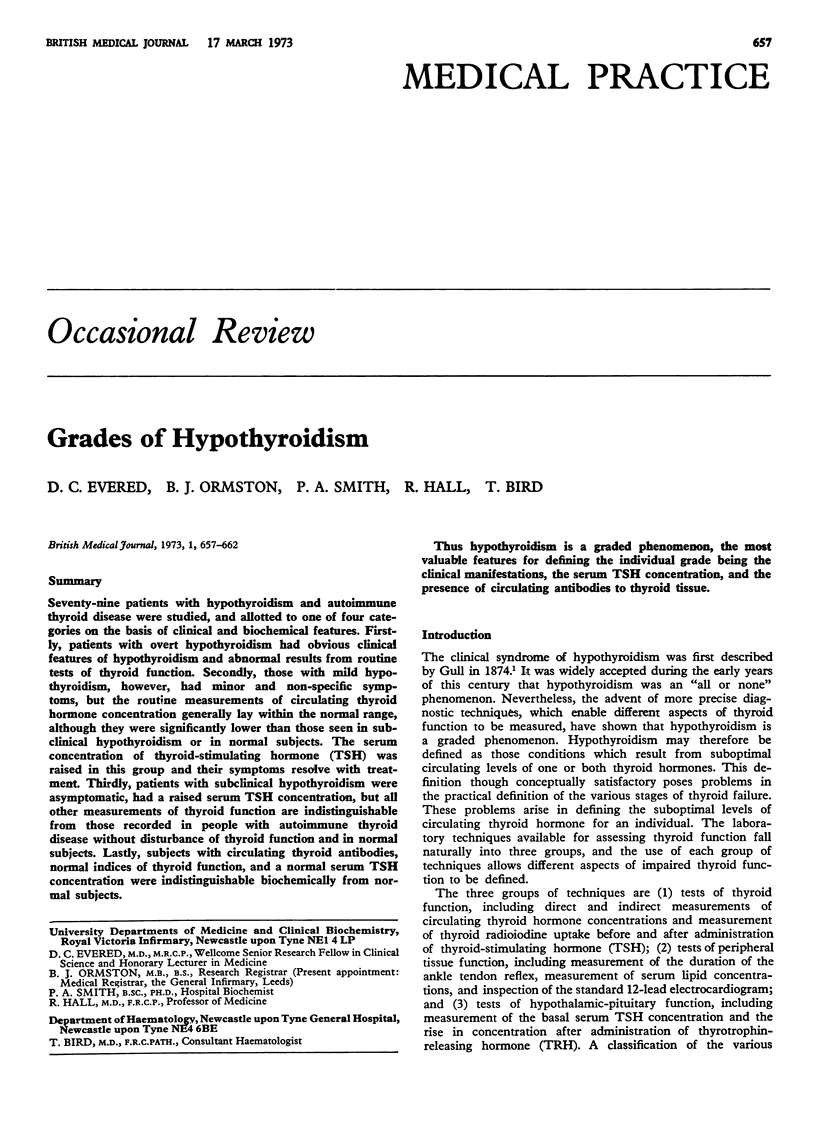
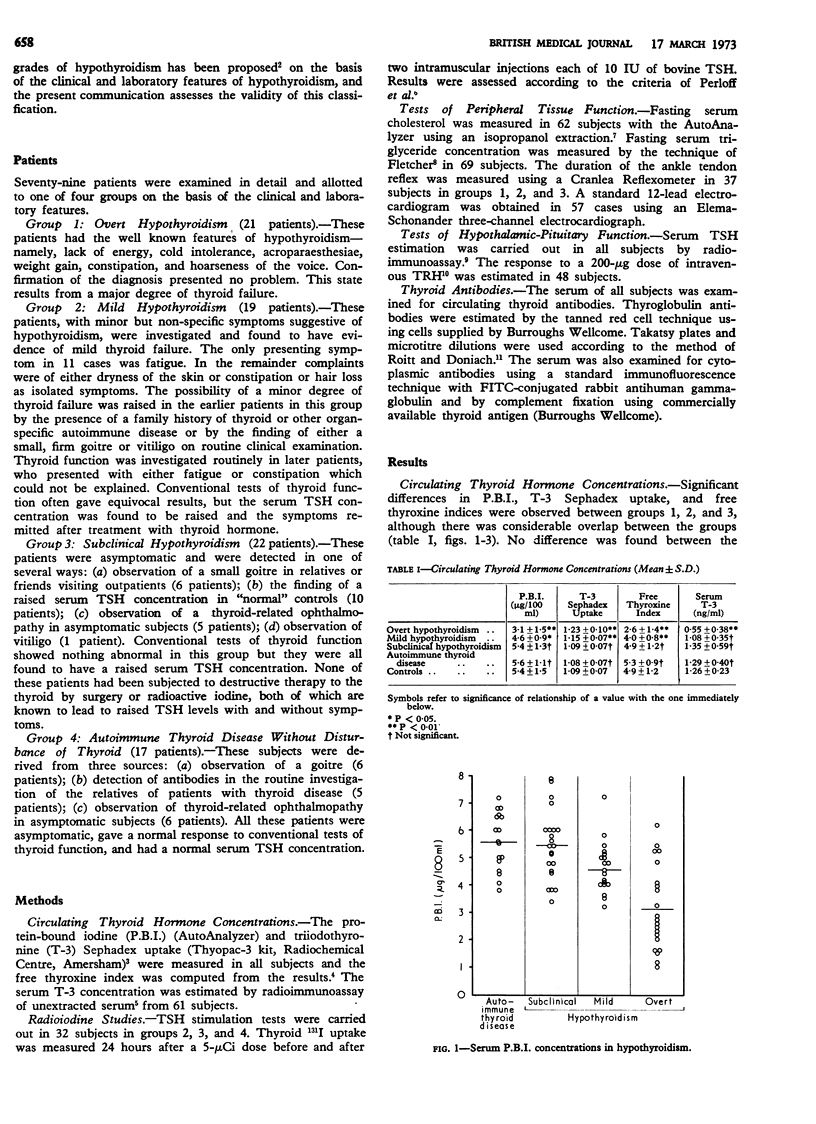
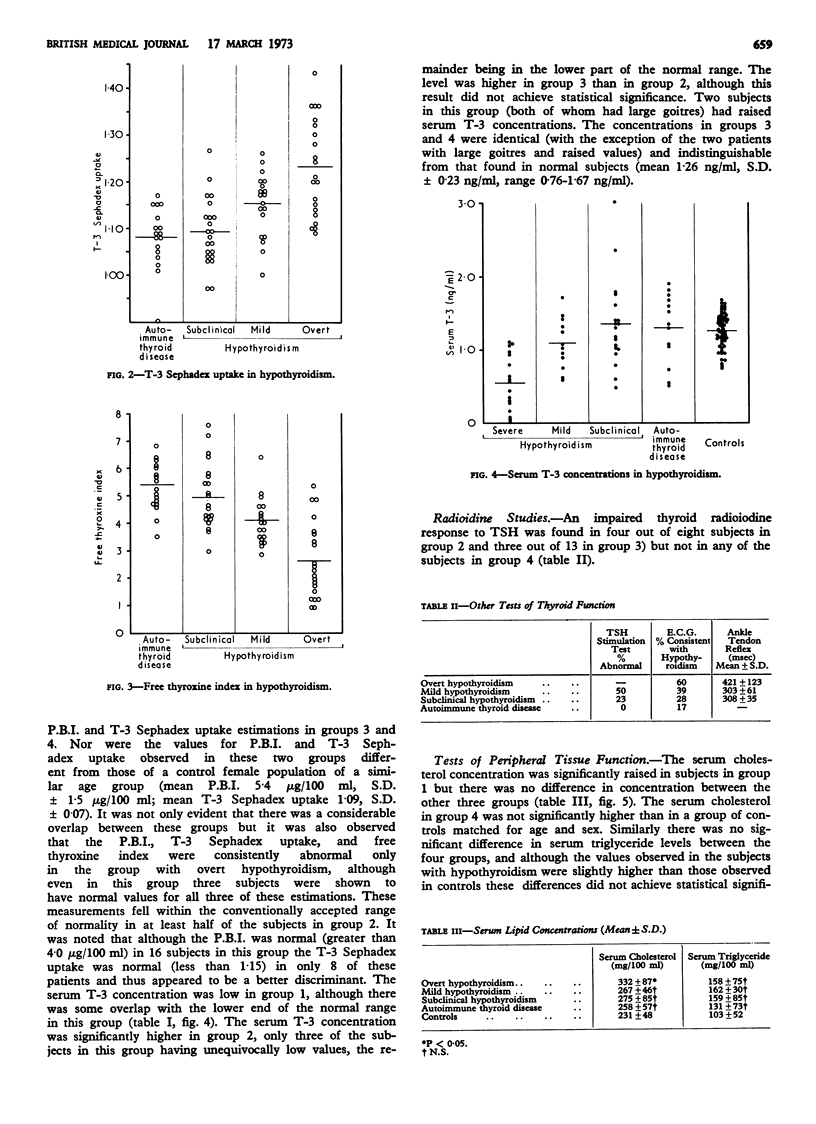
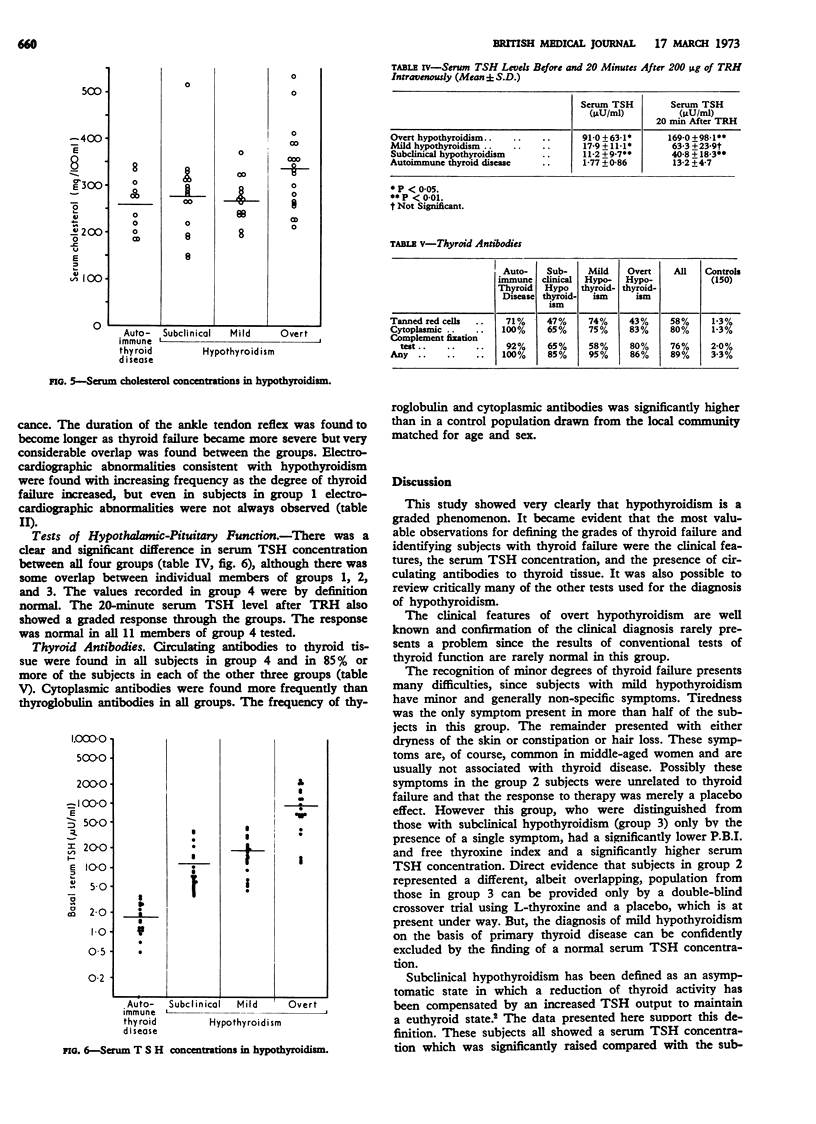
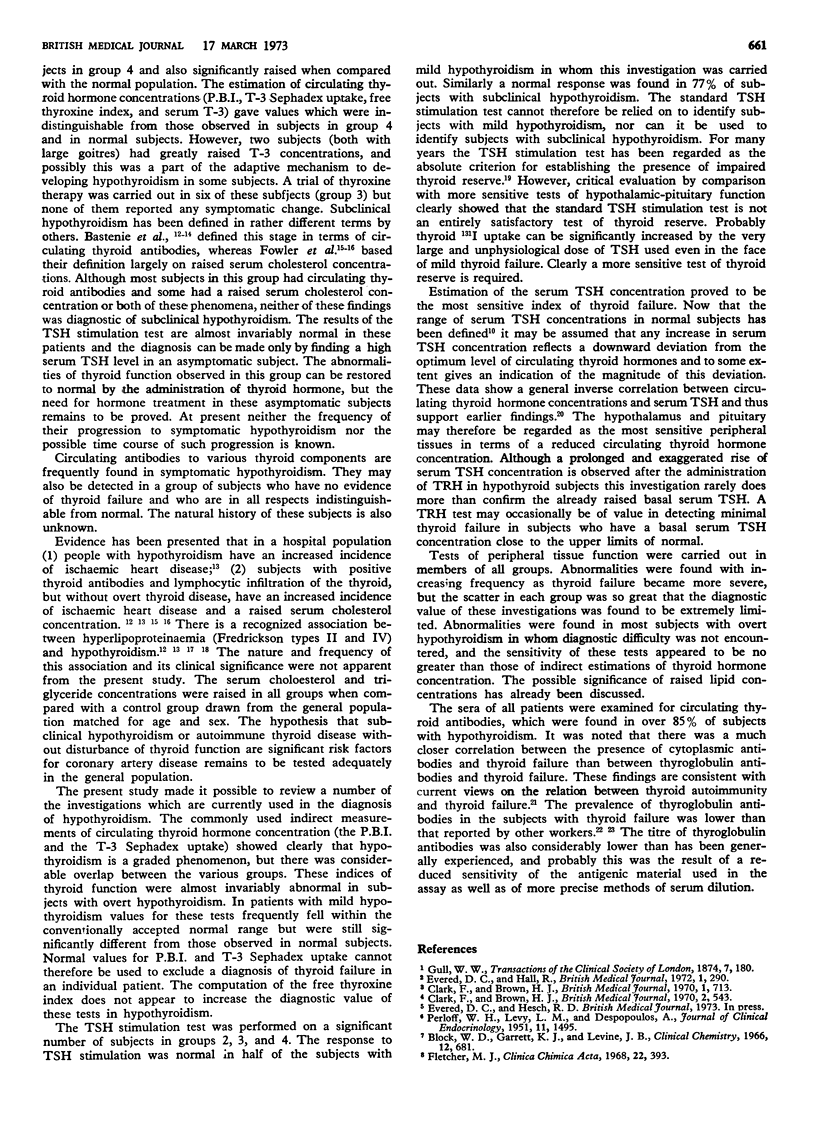
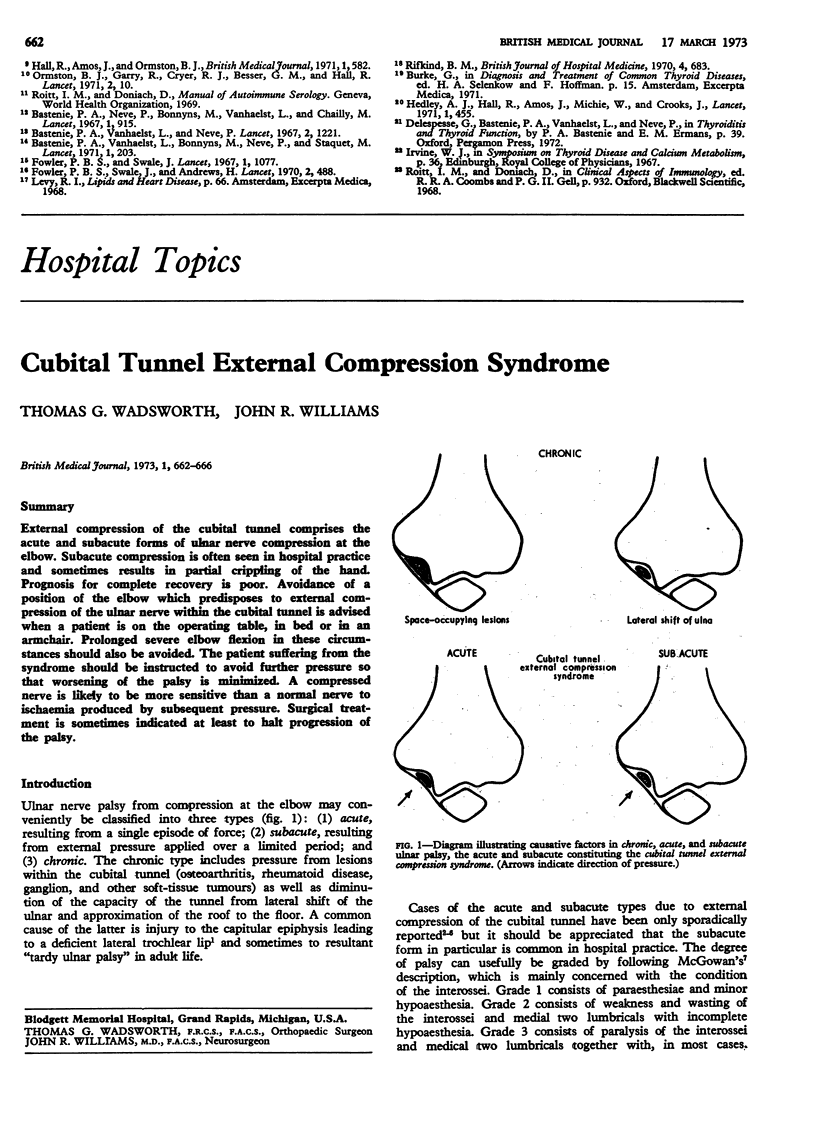
Selected References
These references are in PubMed. This may not be the complete list of references from this article.
- Bastenie P. A., Bonnyns M., Neve P., Vanhaelst L., Chailly M. Clinical and pathological significance of asymptomatic atrophic thyroiditis. A condition of latent hypothyroidism. Lancet. 1967 Apr 29;1(7496):915–918. doi: 10.1016/s0140-6736(67)91486-9. [DOI] [PubMed] [Google Scholar]
- Bastenie P. A., Vanhaelst L., Bonnyns M., Neve P., Staquet M. Preclinical hypothyroidism: a risk factor for coronary heart-disease. Lancet. 1971 Jan 30;1(7692):203–204. doi: 10.1016/s0140-6736(71)90947-0. [DOI] [PubMed] [Google Scholar]
- Bastenie P. A., Vanhaelst L., Neve P. Coronary-artery disease in hypothyroidism. Lancet. 1967 Dec 9;2(7528):1221–1222. doi: 10.1016/s0140-6736(67)90562-4. [DOI] [PubMed] [Google Scholar]
- Block W. D., Jarrett K. J., Jr, Levine J. B. An improved automated determination of serum total cholesterol with a single color reagent. Clin Chem. 1966 Oct;12(10):681–689. [PubMed] [Google Scholar]
- Clark F., Brown H. J. Evaluation of Thyopac-3 test in the in-vitro assessment of thyroid function. Br Med J. 1970 Mar 21;1(5698):713–715. doi: 10.1136/bmj.1.5698.713. [DOI] [PMC free article] [PubMed] [Google Scholar]
- Clark F., Brown H. J. Free thyroxine index. Br Med J. 1970 May 30;2(5708):543–543. doi: 10.1136/bmj.2.5708.543-a. [DOI] [PMC free article] [PubMed] [Google Scholar]
- Fowler P. B., Swale J., Andrews H. Hypercholesterolaemia in borderline hypothyroidism. Stage of premyxoedema. Lancet. 1970 Sep 5;2(7671):488–491. doi: 10.1016/s0140-6736(70)90111-x. [DOI] [PubMed] [Google Scholar]
- Fowler P. S., Swale J. Premyxoedema and coronary-artery disease. Lancet. 1967 May 20;1(7499):1077–1079. doi: 10.1016/s0140-6736(67)92650-5. [DOI] [PubMed] [Google Scholar]
- Hall R., Amos J., Ormston B. J. Radioimmunoassay of human serum thyrotrophin. Br Med J. 1971 Mar 13;1(5749):582–585. doi: 10.1136/bmj.1.5749.582. [DOI] [PMC free article] [PubMed] [Google Scholar]
- Hedley A. J., Amos J., Hall R., Michie W., Crooks J. Serum-thyrotropin levels after subtotal thyroidectomy for Graves' disease. Lancet. 1971 Mar 6;1(7697):455–458. doi: 10.1016/s0140-6736(71)91084-1. [DOI] [PubMed] [Google Scholar]
- Ormston B. J., Cryer R. J., Garry R., Besser G. M., Hall R. Thyrotrophin-releasing hormone as a thyroid-function test. Lancet. 1971 Jul 3;2(7714):10–14. doi: 10.1016/s0140-6736(71)90005-5. [DOI] [PubMed] [Google Scholar]
- PERLOFF W. H., LEVY L. M., DESPOPOULOS A. The use of thyrotropic hormone (TSH) in the diagnosis of myxedema. J Clin Endocrinol Metab. 1951 Dec;11(12):1495–1502. doi: 10.1210/jcem-11-12-1495. [DOI] [PubMed] [Google Scholar]


